This time of year it’s hard not to notice the Ticks, especially if you have a pet that goes outdoors! How are the Ticks in your area this year?
We moved to the farm about 6 weeks ago where there are lots of trees, long grass and my dogs are out and about more frequently. In the first 3 weeks I found about 25 Ticks total which doesn’t seem too terribly bad for that period of time and having two dogs. But in the past 3 weeks I feel like that number has gone up quite a bit, I found at least 15 on Bindi on her ears and neck in one day! I have heard from many that it is an exceptionally bad year for Ticks and I’m starting to agree more and more! I like to collect the Ticks I find on my dogs and myself in a container with rubbing alcohol to tally up each season. If you’re wondering why I put them in rubbing alcohol, it’s because it is one thing that will actually kill them! They are very tough little bugs.
Below is my Tick jar from the first 3 weeks:
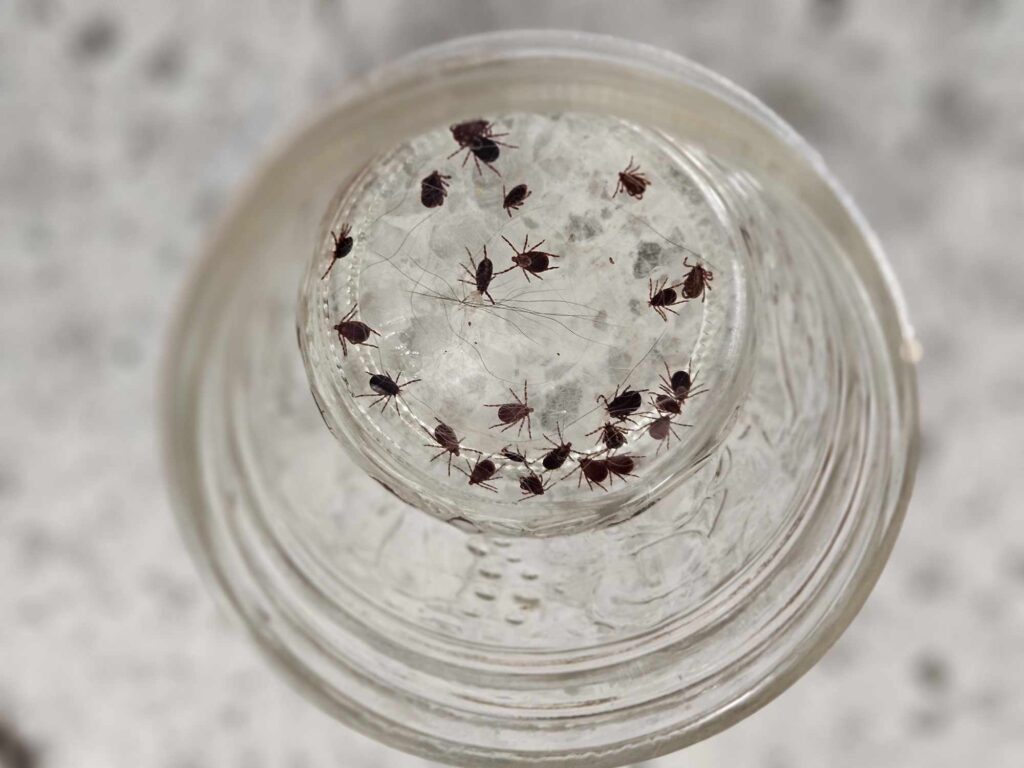
Below is our Tick jar at present, which doesn’t include another dozen or so we picked off outside:
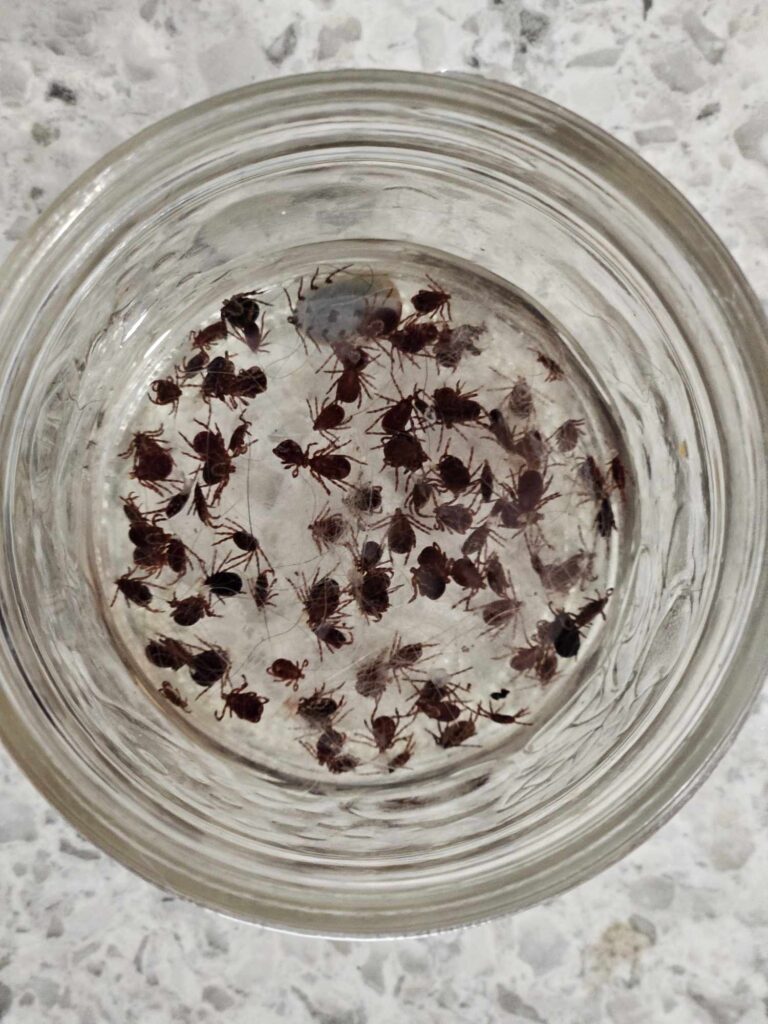
How to Deal with Ticks!
When it comes to Ticks, prevention is the best option. That can mean different things for different people. Some prefer to use a Tick treatment such as those prescribed by a Vet including NexGard, Bravecto or other brands. Or topical treatments that are absorbed through the skin. These act as neurotoxins which are meant to kill the Tick once it has bitten/attached. These can be useful for those that are dealing with a lot of Ticks, have outdoor dogs or livestock guardian dogs, in areas with Lyme disease or for those looking for a medication-type solution. Some pet boarding facilities, grooming salons and doggy daycares also require that dogs visiting their facility be on a Tick medication during the peak season. Tick medications can work great but use with caution and research the kind you plan to use as some dogs can have bad side effects using these!
Other prevention options can include avoiding areas where Ticks tend to “hang out” such as grassy and wooded areas. You can also use some more natural options that can include drops or sprays that need to be applied more frequently and often include ingredients such as Neem Oil, Apple Cider Vinegar and different Essential Oils. These can help prevent Ticks from attaching in the first place as the Ticks find the ingredients ‘un-appetizing’. Always be cautious of what you are spraying/applying to your pet and follow directions on the container and watch for reactions.
If you live on an acreage or farm I also hear that guinea fowl are great for Tick control but not everyone has that option and they can also be pretty noisy creatures. I’m hoping to try some of them out in the future!
I check my dogs multiple times a day, use a natural spray when I remember, and remove any Ticks I find using a Tick removing Tool such as a Tick Key or Tick Twister. I have used Nexgard in the past but prefer a more natural solution if possible! Use what works for you and your pet(s), do your research and know what you are giving/putting on your pet!
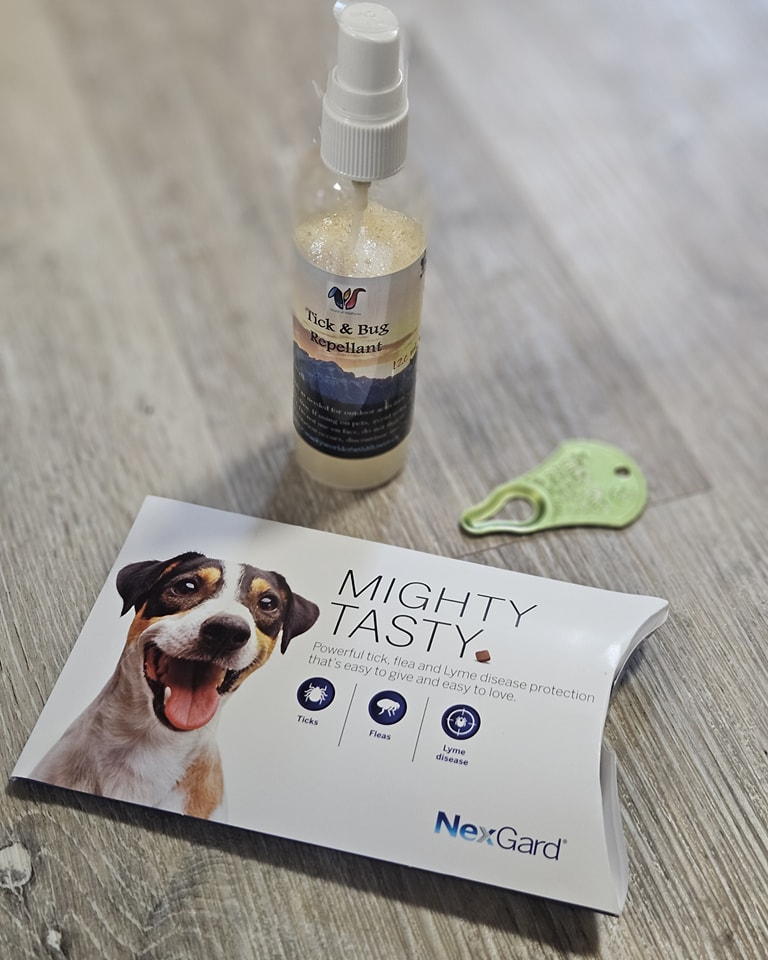
What to Do When You Find a Tick Attached to Your Pet (or You!)
Many people are squeamish of Ticks and I don’t blame them, they’re pretty gross! Over the years of having dogs and removing many of them I have gotten to the point where I can remove Ticks with my fingers if needed. When you find a Tick attached to your pet, or yourself, the best thing to do is use a tool, one made for Ticks or a pair of tweezers. It’s important to hook on, or grab the Tick as close to where it is attached and pull straight out (don’t squeeze it and try not to twist it). You want to make sure you remove the whole Tick and don’t accidentally rip the head off and leave that behind as it can cause an infection to start. When I remove a Tick from my dog I like to show them what I am doing. I feel like it lets them know that I am helping them. Tell me I’m not the only one who does this?!
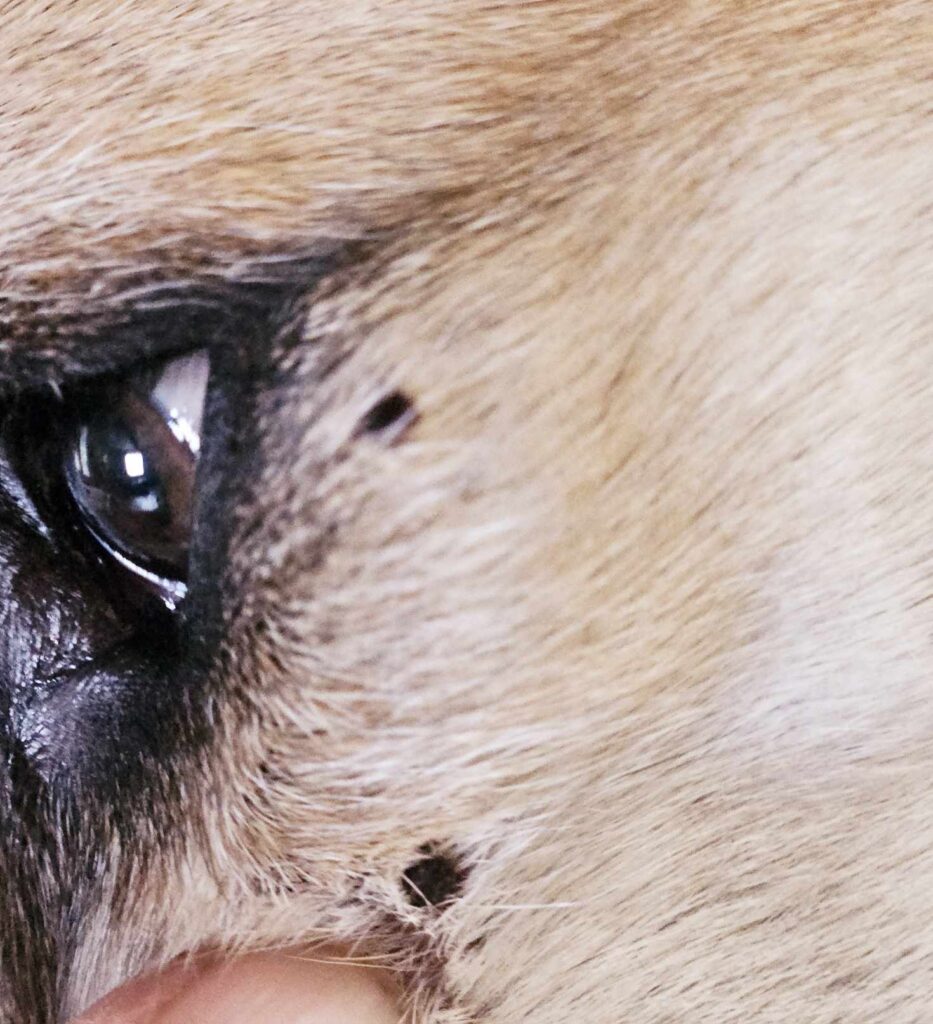
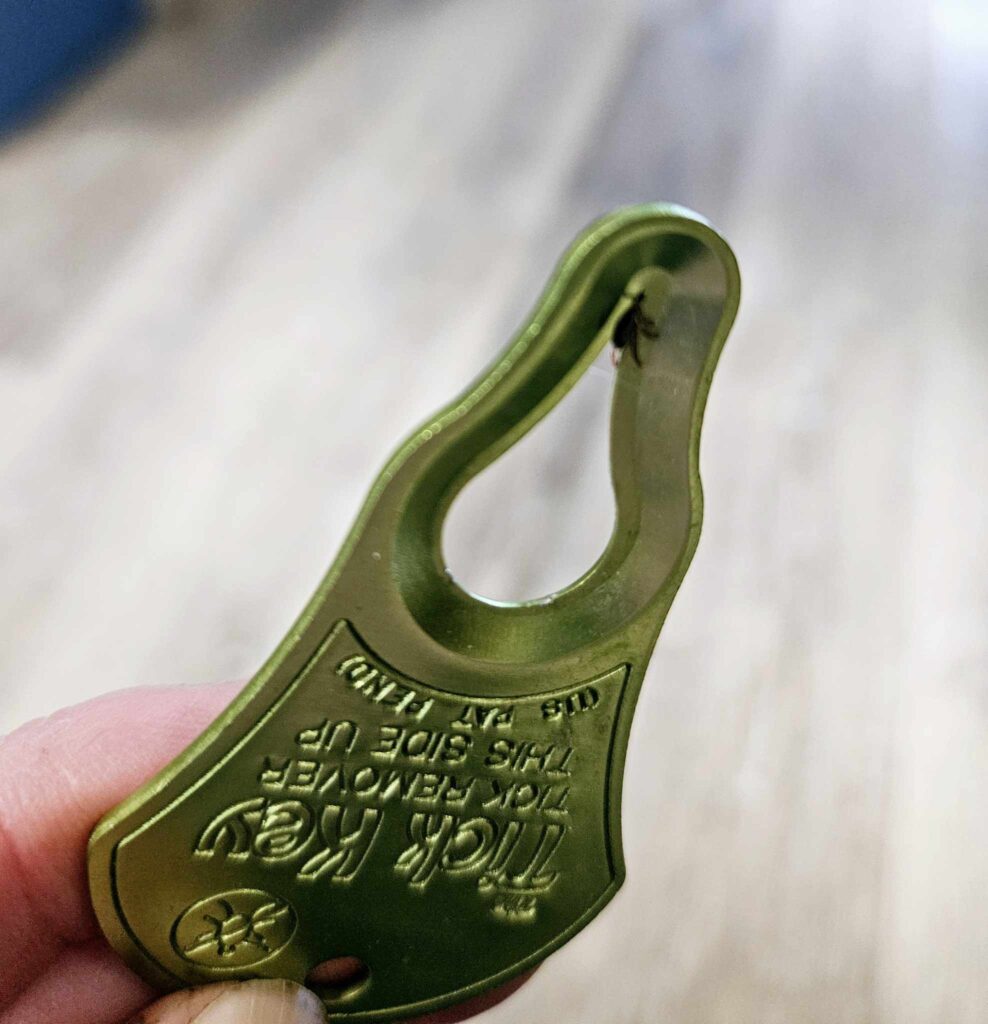
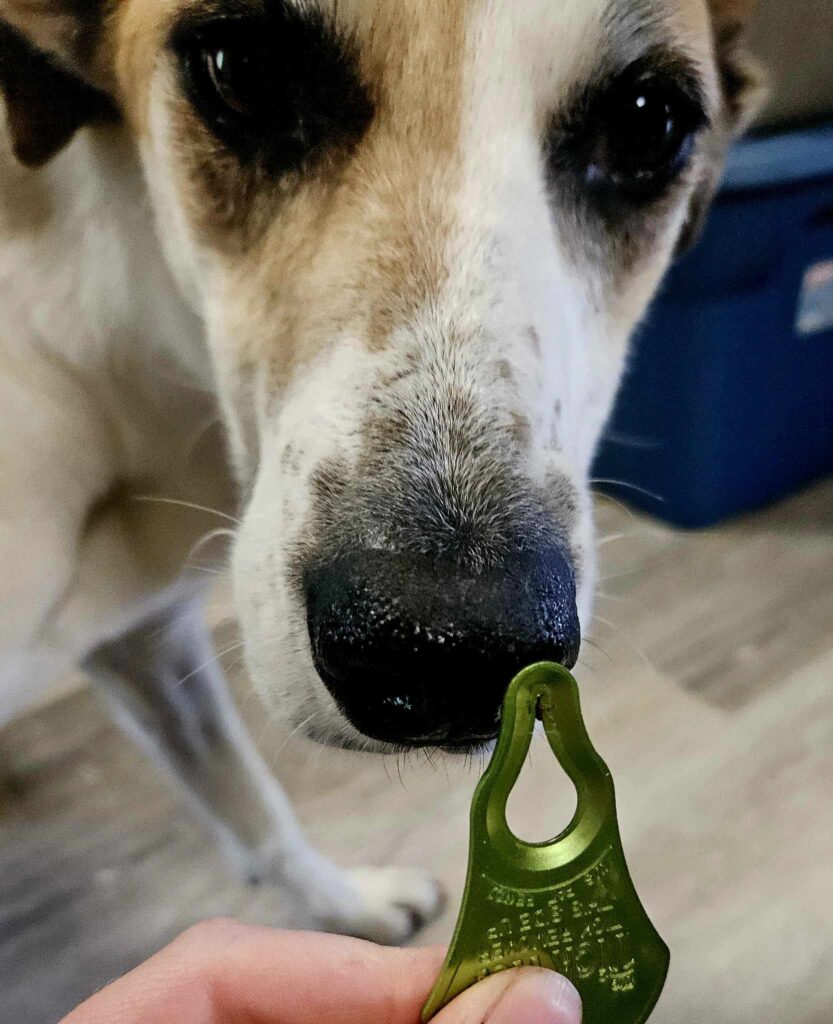
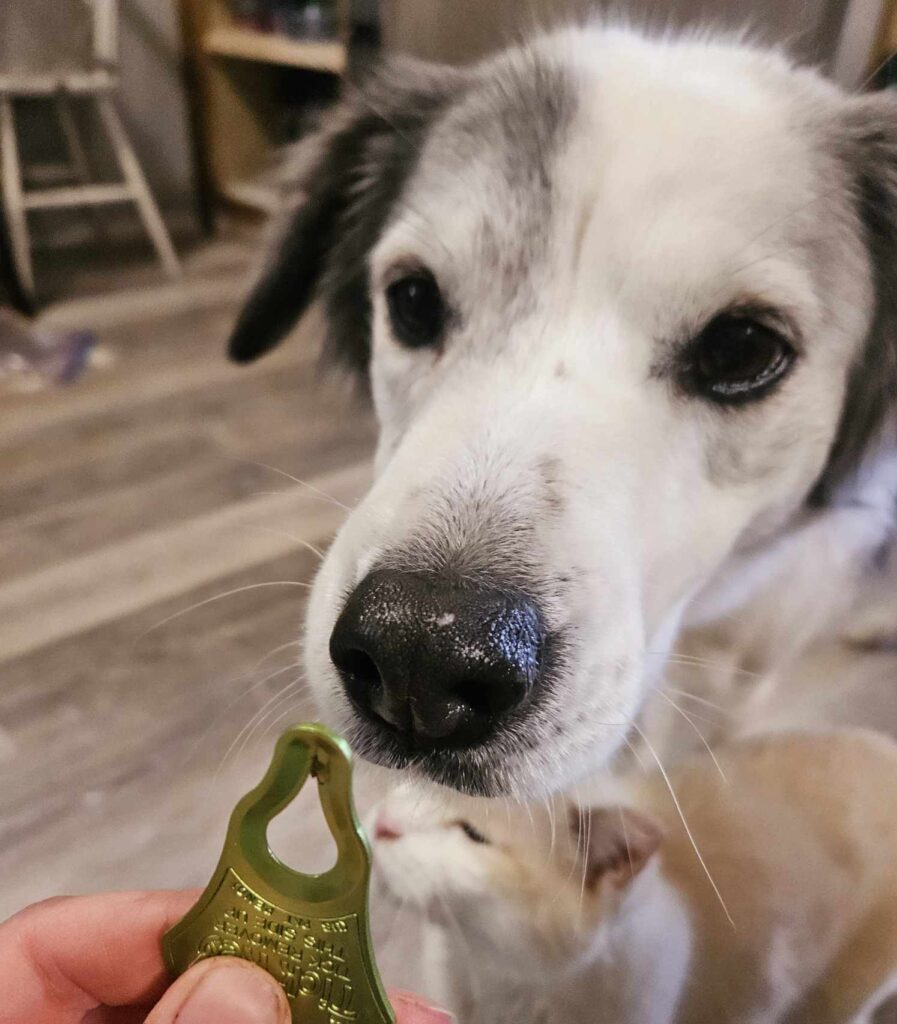
If you can catch and remove Ticks within the first 12 hours of them attaching you greatly reduce the transfer of any type of disease, plus they are small and much easier to remove. The longer they are attached the bigger they get and once removed they tend to leave a bigger wound when removed which will scab over and heal in time but is likely more itchy and uncomfortable!
As you can see in the picture below, the small tick is one found that had just barely attached, and the other one that has been attached for a few days that I somehow missed on my daily inspections on Bindi’s shoulder. The engorged Tick was much harder to remove. Disgusting but also a bit fascinating that their body can expand so much!
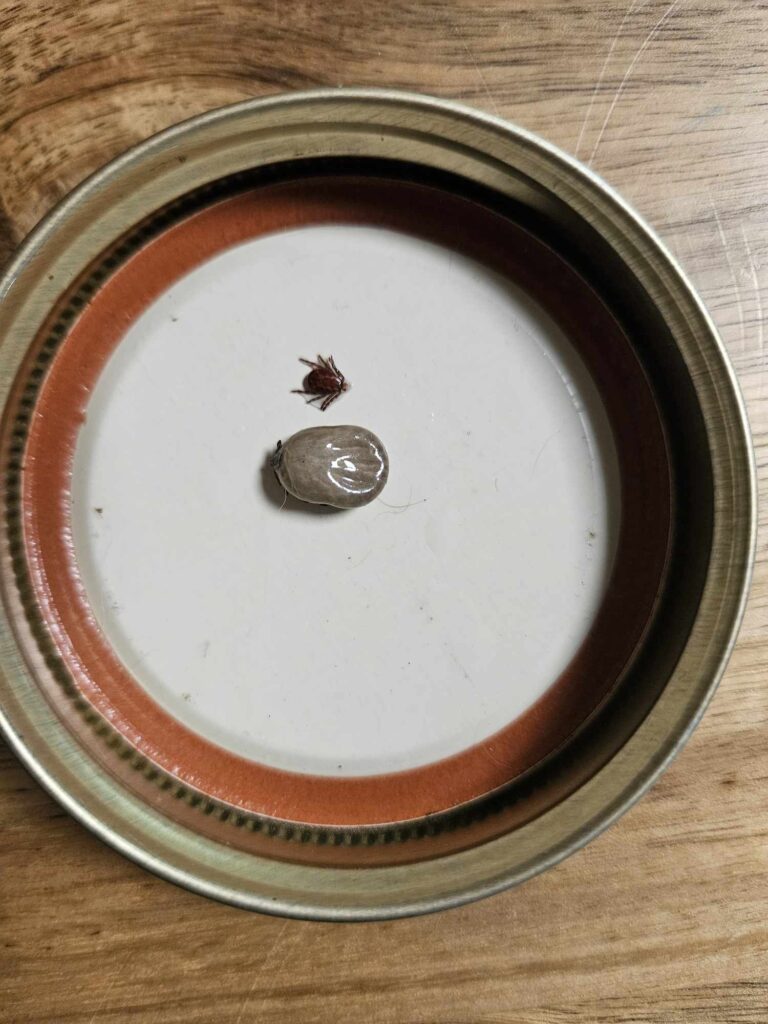
Ticks are unfortunately part of life for many of us this time of year. It’s best to be prepared and focus on prevention in whatever way(s) that work best for you and your pet(s).